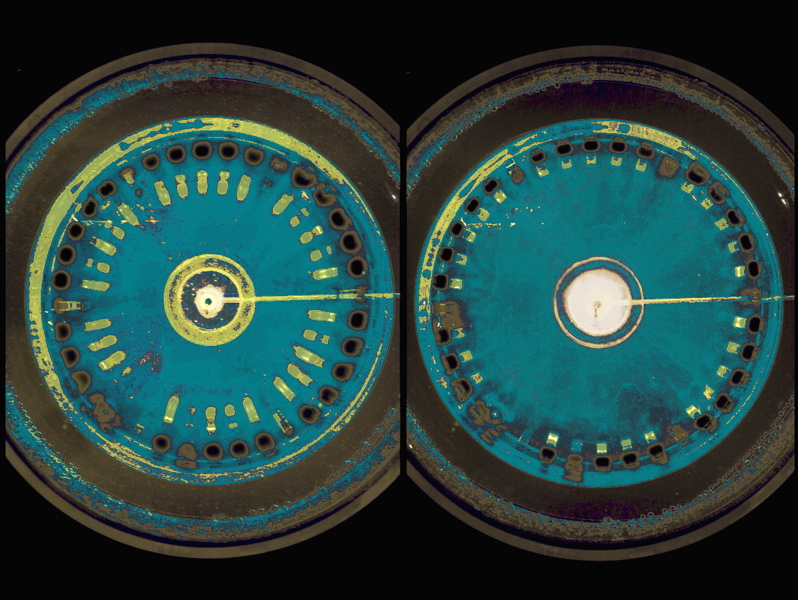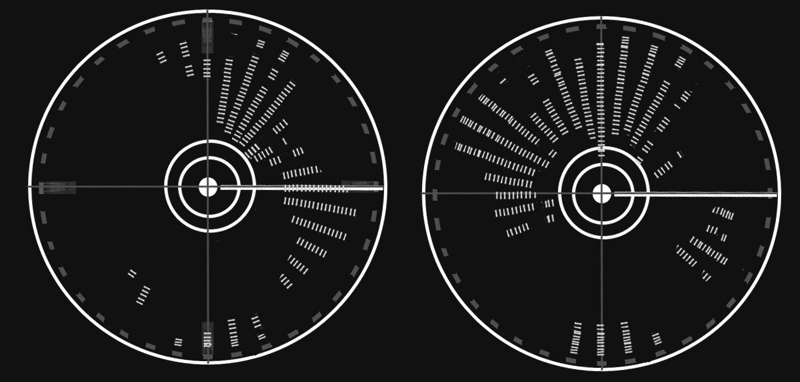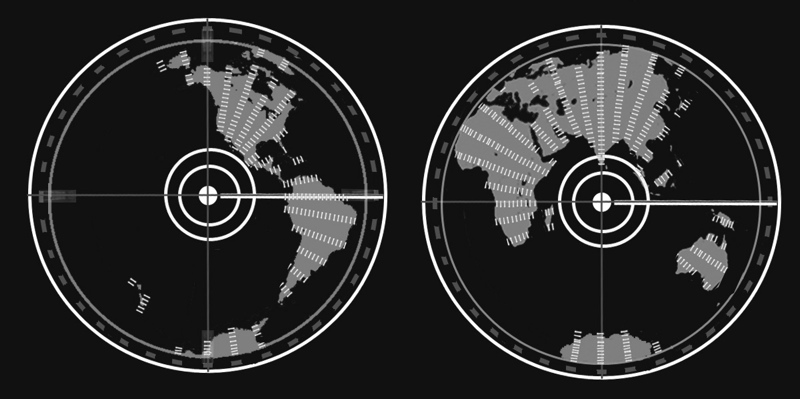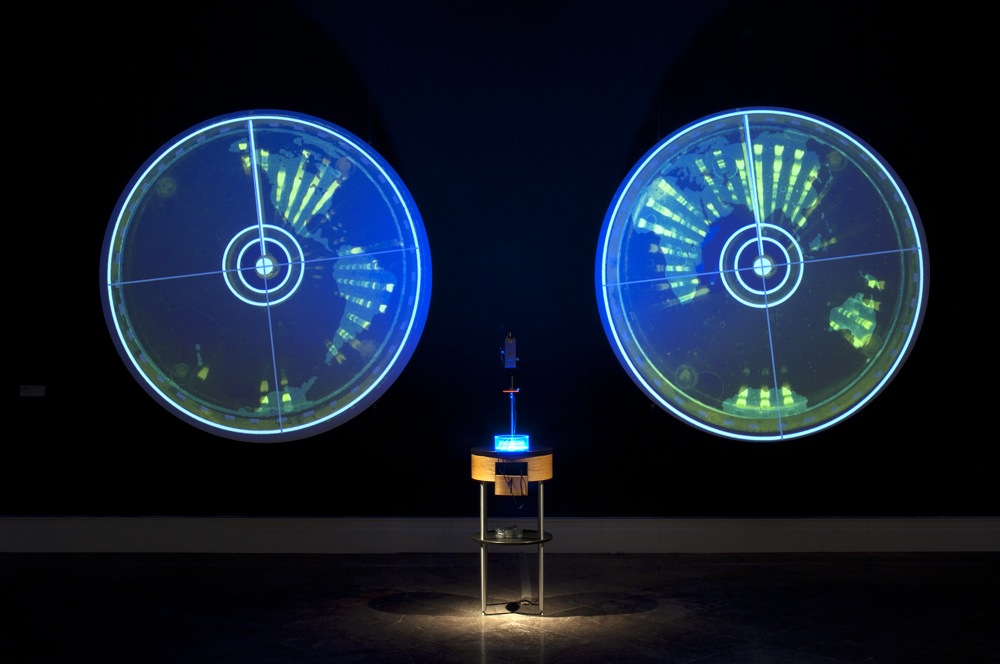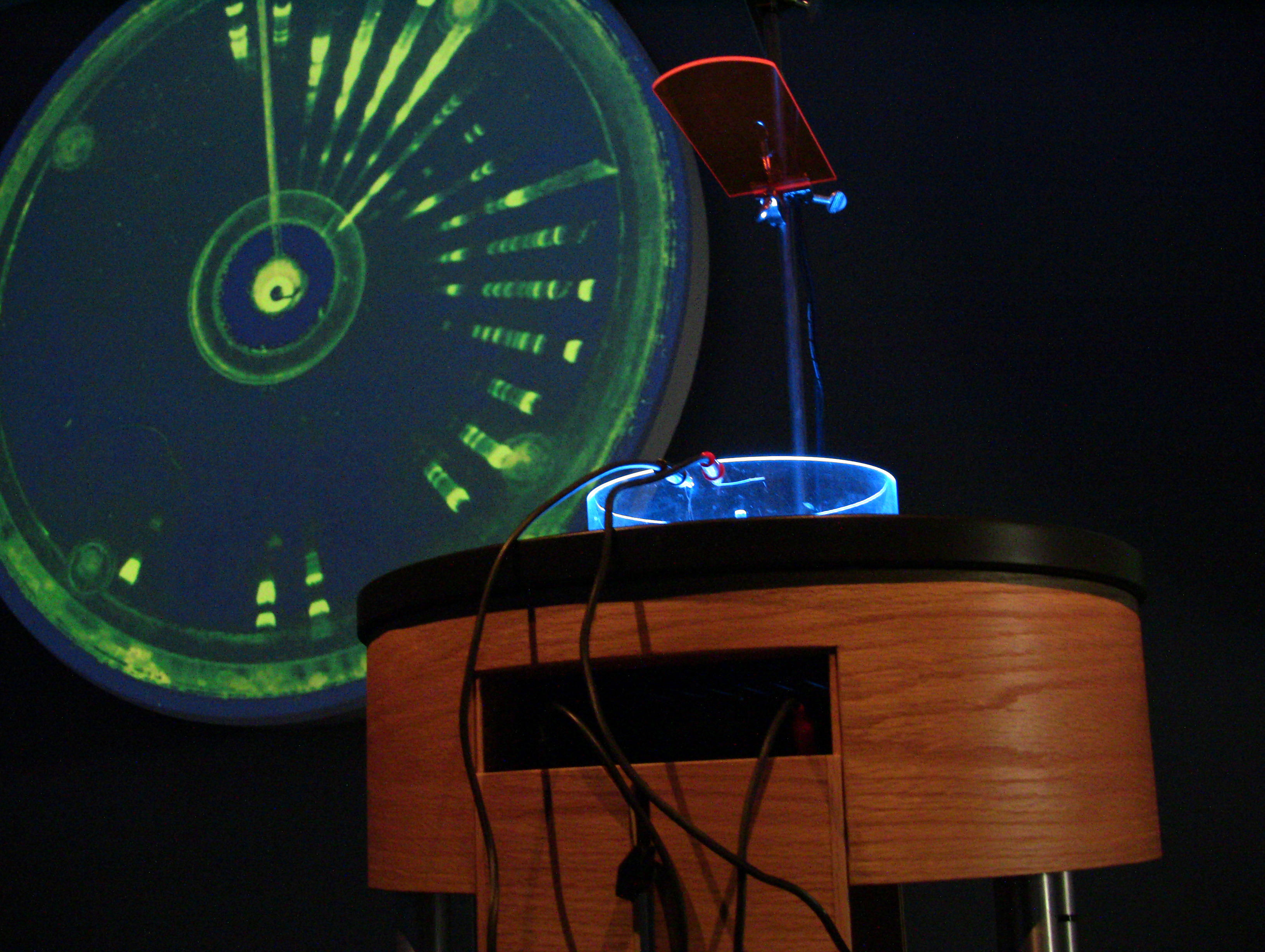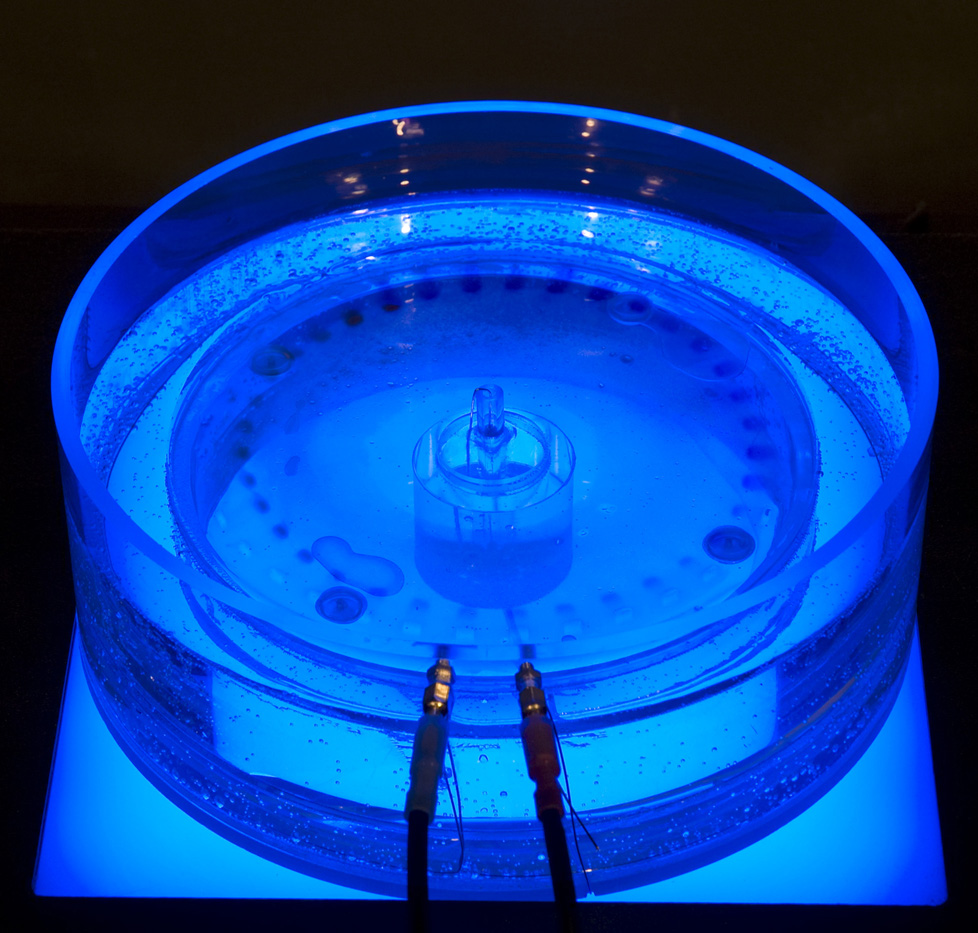
Ocular Revision, documentation of first imaging experiment.

Standard DNA image showing multiple DNA bands on gel.
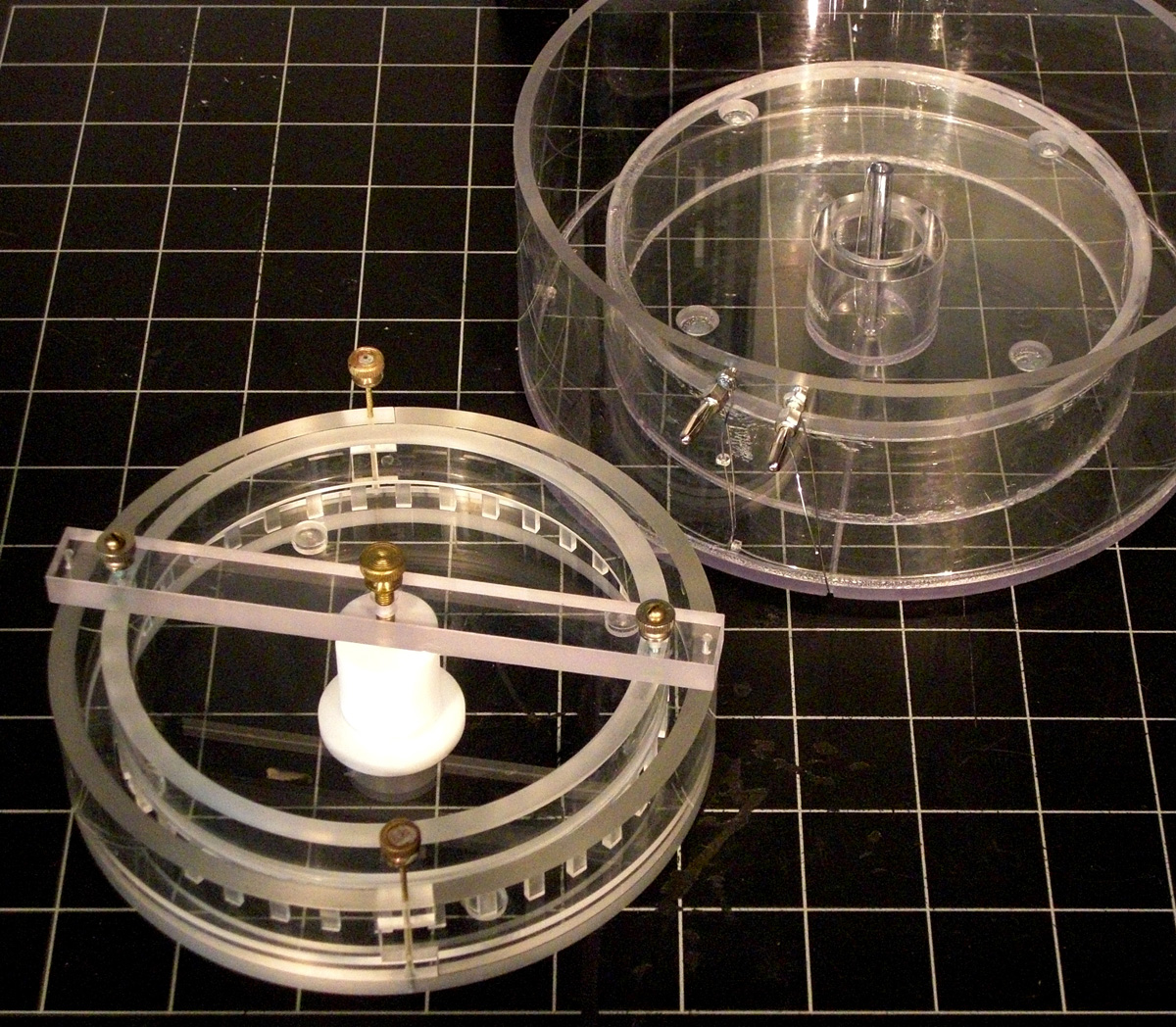
Ocular Revision, custom, circular electrophoresis rig shown.
Ocular Revision uses a custom, experimental, circular gel electrophoresis rig to visualize DNA bands. I designed this circular rig to be polarized from inside to outside of the circle. The radial design and inside-out polarization allows the apparatus to create DNA images reminiscent not of a “barchart” or a “progress bar” on a computer screen, but rather a slow emergence; a signal; a flowering; an attraction or repulsion.
The first images that I am creating with the circular DNA electrophoresis rigs are based upon hemispherical maps of the world.
These “Genetic Maps” could be interpreted as simplistic form-based puns in which the circle is a visual metaphor for a heavenly body like the earth. But at a deeper level they call attention to ingrained metaphors such as “genetic mapping”, which are problematic because “mapping” implies (distanced) simplification, abstraction, and exploitation (i.e. political, and economic maps of the world).
The three adjacent image pairs show:
(top) Actual human DNA imaged on the Ocular Revision circular electrophoresis aparatus. Image formed is just a test to see if the device would work, not meant to form a specific image.
(middle and bottom) Sketches, hypothetically showing how the hemisheres of the earth might be produced from apropriately sized DNA fragments visualized in the Ocular Revision aparatus.
The final exhibition form of Ocular Revision is variable. It will probably entail large images of the circular maps, generally these images will be time-based, perhaps they will be produced live, perhaps they will be accompanied by the circular electrophoresis apparatus itself. See some of the first iterations below.
